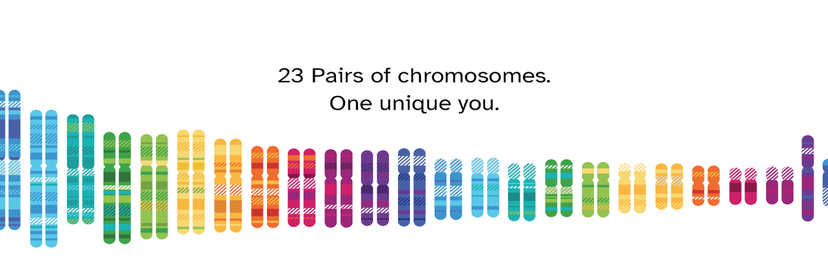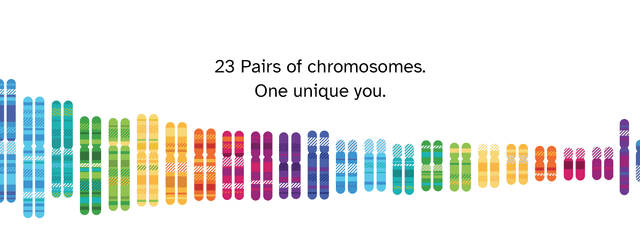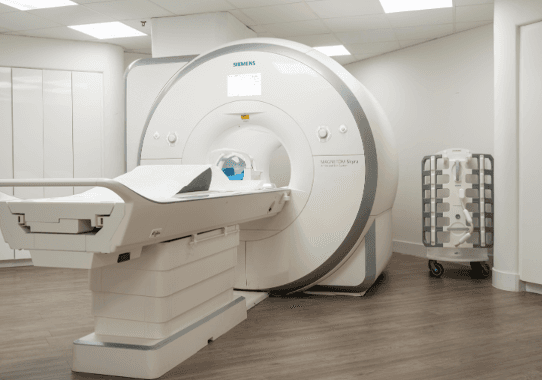CRISPR technology has become a groundbreaking tool in the world of genetic editing and medicine. By allowing scientists to make precise changes to DNA, CRISPR has opened up new possibilities for treating diseases, improving crops, and even controlling pests. This article explores the science behind CRISPR, its applications, ethical considerations, and the future prospects of this revolutionary technology.
Key Takeaways
- CRISPR/Cas9 allows for precise DNA editing, which can help treat genetic disorders and diseases.
- The technology has applications beyond medicine, including agriculture and pest control.
- Ethical and regulatory challenges need to be addressed for CRISPR to reach its full potential.
- Future advancements could lead to personalized medicine and new treatments for chronic diseases.
- Pioneers like Emmanuelle Charpentier and Jennifer Doudna have been instrumental in developing CRISPR technology.
The Science Behind CRISPR/Cas9 Technology
Mechanism of Action
CRISPR/Cas9 edits genes by precisely cutting DNA and then using natural DNA repair processes to change the gene in the desired way. This system is highly accurate and efficient. It has two main parts: the Cas9 enzyme and a guide RNA.
Components: Cas9 and Guide RNA
- CRISPR: Short sequences of genetic information that some bacteria use to defend against viruses.
- Cas9: An enzyme that acts like scissors to cut DNA at a specific spot chosen by the guide RNA.
- Guide RNA (gRNA): A molecule that directs Cas9 to the right place in the DNA.
Development and Evolution
CRISPR/Cas9 naturally evolved in bacteria and archaea as a defense against viruses. When a bacterium is first attacked by a virus, it saves a piece of the virus's DNA in its own CRISPR region. If the same virus attacks again, the bacterium uses this saved DNA to recognize and fight off the virus. Over time, scientists have adapted this natural system for gene editing in other organisms.
CRISPR/Cas9 is a groundbreaking tool that has changed the way we think about genetic editing and its potential applications.
Applications in Medicine
Treating Genetic Disorders
CRISPR technology has opened new doors for treating genetic disorders. By precisely editing faulty genes, scientists can correct mutations that cause diseases. This approach holds promise for conditions like cystic fibrosis, sickle cell anemia, and muscular dystrophy.
Cancer Therapies
In the fight against cancer, CRISPR is a powerful tool. Researchers are using it to modify immune cells, making them better at targeting and destroying cancer cells. This method, known as CAR-T cell therapy, is showing great potential in clinical trials.
Infectious Disease Control
CRISPR can also help control infectious diseases. Scientists are exploring ways to use it to target and disable the DNA of harmful viruses and bacteria. This could lead to new treatments for infections that are resistant to current antibiotics.
The potential of CRISPR in medicine is vast, offering hope for cures and treatments that were once thought impossible.
CRISPR in Agriculture
Enhancing Crop Resilience
CRISPR technology has revolutionized the way we approach crop resilience. By editing specific genes, scientists can create plants that withstand extreme weather conditions, such as drought and frost. This advancement is crucial for ensuring food security in the face of climate change. Farmers can now grow crops in regions previously deemed unsuitable for agriculture, thereby expanding arable land.
Pest and Disease Resistance
One of the most promising applications of CRISPR in agriculture is its ability to make crops resistant to pests and diseases. Traditional methods of pest control often involve harmful chemicals, but gene editing offers a more sustainable solution. By targeting and modifying specific genes, scientists can develop plants that are naturally resistant to insects and pathogens. This not only reduces the need for chemical pesticides but also promotes healthier ecosystems.
Nutritional Improvements
CRISPR technology also holds the potential to enhance the nutritional value of crops. For instance, scientists are working on increasing the levels of essential vitamins and minerals in staple foods like rice and wheat. This could have a significant impact on global health, particularly in developing countries where malnutrition is prevalent. Imagine a world where a single serving of rice could provide all the necessary nutrients for a child's daily needs.
The ability to edit genes with such precision opens up endless possibilities for improving the quality and resilience of our food supply. As we continue to explore the potential of CRISPR in agriculture, we move closer to a future where food scarcity and malnutrition are relics of the past.
Ethical and Regulatory Considerations
Ethical Dilemmas
CRISPR technology brings up many ethical questions. One major concern is the potential for selecting specific traits. This could lead to a society where certain traits are valued over others. Another issue is making sure the technology is used fairly and does not harm anyone. It's important to think about these issues now, before the technology advances further.
Regulatory Landscape
Creating rules for CRISPR is crucial. Governments and organizations need to set up guidelines to ensure the technology is used safely. This includes making sure there are no unintended negative effects. Clear rules can help guide the development and use of CRISPR in a responsible way.
Public Perception
How the public views CRISPR is also important. People need to understand both the benefits and risks of the technology. Educating the public can help build trust and ensure that CRISPR is used in a way that benefits everyone.
It's essential to have open discussions about the ethical and regulatory aspects of CRISPR to make sure it is used responsibly and fairly.
Future Prospects and Innovations
Next-Generation CRISPR Systems
The future of CRISPR technology is incredibly promising, with new advancements on the horizon. Scientists are working on next-generation CRISPR systems that are more precise and efficient. These systems aim to reduce off-target effects, making genetic editing safer and more reliable. One of the most exciting developments is the potential for CRISPR to edit multiple genes at once, opening up new possibilities for complex genetic therapies.
Potential for Personalized Medicine
CRISPR technology holds great promise for personalized medicine. By tailoring treatments to an individual's genetic makeup, doctors can provide more effective and targeted therapies. This could revolutionize the way we treat diseases, from cancer to rare genetic disorders. Imagine a world where your treatment is specifically designed for you, based on your unique genetic code.
Challenges and Opportunities
While the future of CRISPR is bright, there are still challenges to overcome. Ethical concerns, regulatory hurdles, and technical limitations need to be addressed. However, these challenges also present opportunities for innovation and collaboration. Researchers, policymakers, and the public must work together to navigate these complexities and unlock the full potential of CRISPR technology.
The journey of CRISPR is just beginning, and its future is filled with both promise and uncertainty. As we continue to explore its capabilities, we must remain vigilant and thoughtful about its applications.
Pioneers and Key Contributors
Nobel Prize Winners
The Nobel Prize in Chemistry 2020 was awarded to Emmanuelle Charpentier and Jennifer A. Doudna for their pioneering work in developing CRISPR/Cas9 technology. Their discovery has revolutionized genetic editing, making it more accessible and efficient.
Leading Research Institutions
Several institutions have been at the forefront of CRISPR research, including the Broad Institute of MIT and Harvard, the University of California, Berkeley, and the Max Planck Institute. These institutions have not only advanced the science but also played a crucial role in its application in medicine and agriculture.
Notable Clinical Trials
Numerous clinical trials are underway to explore the potential of CRISPR in treating various diseases. Some of the most notable trials include those targeting genetic disorders like sickle cell anemia and beta-thalassemia. These trials are paving the way for future medical breakthroughs.
The rapid advancements in CRISPR technology highlight the importance of continued research and collaboration among scientists worldwide.
Conclusion
CRISPR technology has truly transformed the field of genetic editing and medicine. From its ability to precisely cut and modify DNA to its applications in treating serious diseases, CRISPR/Cas9 has opened up new possibilities that were once thought impossible. Scientists have used this technology to combat diseases like cancer and genetic disorders, and even to improve agriculture. Despite the challenges in delivering this technology safely and effectively, the progress made so far is remarkable. As research continues, CRISPR holds the promise of even more groundbreaking advancements, making it a beacon of hope for the future of medicine and beyond.
Frequently Asked Questions
What is CRISPR/Cas9 technology?
CRISPR/Cas9 is a tool used for editing genes. It allows scientists to cut DNA at specific places and change it, which can help fix genetic problems.
How does CRISPR/Cas9 work?
CRISPR/Cas9 uses two main parts: an enzyme called Cas9 that cuts DNA and a guide RNA that tells Cas9 where to cut. Together, they can make precise changes to DNA.
What diseases can CRISPR/Cas9 potentially treat?
CRISPR/Cas9 can be used to treat many diseases, including genetic disorders, some types of cancer, and even certain infectious diseases.
Are there any ethical concerns with CRISPR/Cas9?
Yes, there are ethical concerns. Some people worry about the potential for unintended changes in DNA, and there are debates about using the technology in human embryos.
How is CRISPR/Cas9 used in agriculture?
In agriculture, CRISPR/Cas9 can help make crops more resistant to pests and diseases, improve their ability to withstand harsh conditions, and even enhance their nutritional value.
Who are the key contributors to CRISPR/Cas9 technology?
Dr. Emmanuelle Charpentier and Dr. Jennifer Doudna are two of the main scientists behind CRISPR/Cas9. They won a Nobel Prize for their work on this technology.
























